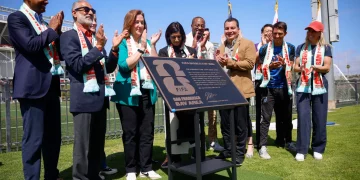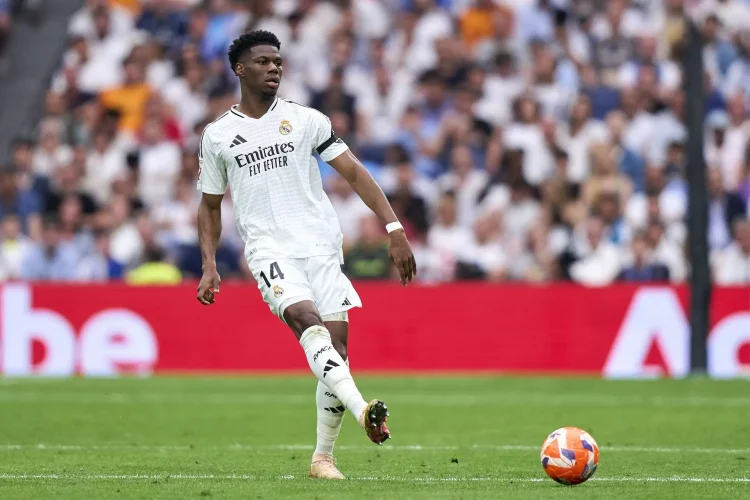The football world has witnessed a remarkable shift in recent years regarding where retiring stars choose to extend their playing careers. The Saudi Pro League (SPL) made headlines with huge financial offers to some of the sport’s biggest names, attempting to transform its league into a global powerhouse. Yet, despite the seemingly overwhelming financial muscle of Saudi clubs, an increasing number of aging football legends are instead opting for Major League Soccer (MLS) in the United States. This phenomenon has become especially pronounced in 2025, sparking debates and analysis around the motivations behind this trend. The answer goes far beyond salary figures, reflecting a complex interplay of tax law changes, lifestyle preferences, franchise equity deals, and long-term business opportunities after retirement. Understanding why MLS is edging out Saudi Arabia as the preferred retirement destination for football stars reveals much about the evolving economics and culture of global football in the mid-2020s.
Tax Law Changes and Lifestyle Factors
One of the fundamental reasons behind retiring football stars favoring MLS over Saudi Arabia is the evolving tax landscape in the United States, which has become increasingly favorable to high-earning athletes. In the past decade, tax reforms and changes to residency requirements have provided players with more advantageous frameworks to retain larger portions of their earnings. The U.S. tax code, with its progressive income brackets combined with state-specific tax policies, allows players to strategically choose locations such as Florida, Texas, or Washington — states with no personal income tax — thereby optimizing their net income. By contrast, Saudi Arabia, despite having no income tax on wages, often presents more opaque and sometimes complex financial conditions tied to foreign players, including mandatory fees, sponsorship obligations, and residency rules that can affect net earnings and lifestyle quality. The financial aspect thus, while initially appearing simpler in Saudi Arabia, often doesn’t translate into better take-home pay once other factors are considered.
Beyond taxation, lifestyle factors weigh heavily on a player’s decision. MLS franchises are located in culturally rich, cosmopolitan cities such as Miami, Los Angeles, New York, and Seattle, which offer vibrant social scenes, diverse dining options, world-class healthcare, and established football cultures. For players transitioning out of the intense spotlight of European or global football, these cities offer a blend of privacy and community that appeals to those looking to settle with their families. In contrast, the lifestyle in Saudi Arabia, despite rapid modernization efforts and expanding entertainment options, remains more restrictive in terms of social freedoms, cultural norms, and day-to-day living, especially for those accustomed to Western lifestyles. Additionally, the language barrier and distance from global football hubs can make Saudi Arabia less attractive for players who want to stay connected with the sport’s broader ecosystem.
The climate also plays a role. MLS cities offer varied environments with seasons, which many players prefer for quality of life and mental health reasons. Saudi Arabia’s desert climate, while warm year-round, can be physically taxing and less appealing for longer-term residency, especially when considering family needs and schooling for children.
Franchise Equity Offer Comparisons
Another major differentiator that has emerged in 2025 is the increasing use of franchise equity as part of player contracts in MLS. This means retiring stars are not only earning a salary for their time on the pitch but are also given opportunities to own shares or stakes in the clubs they join. This business model, pioneered by MLS over the past decade, creates a win-win scenario: players invest in the growth of the league while securing a future revenue stream beyond their playing career.
The equity offers in MLS are typically structured to give former stars a long-term financial stake in the club’s success. For example, when Lionel Messi joined Inter Miami, reports indicated he obtained a significant ownership interest, making him not just a player but also a part-owner. This equity stake is valuable because MLS teams are rapidly appreciating assets due to league expansion, rising broadcasting revenues, and increasing fan engagement. The equity model aligns player incentives with club success and league growth, which is not something commonly offered by Saudi clubs.
Saudi Arabia’s clubs, backed by sovereign wealth funds and state ownership, generally do not extend ownership stakes to players. The league operates under a more centralized model, where clubs function under heavy government influence and less private investment. For players, this means lucrative short-term contracts but no real opportunity to build wealth through ownership or to influence club operations long term. The lack of equity options diminishes the appeal for players who are thinking strategically about their post-retirement lives.

In addition, MLS’s franchise equity offers come with added prestige and influence in the football world. Being a partial owner of an MLS club opens doors in sports management, media, and global football governance, whereas players in the SPL often have limited pathways to such roles due to the league’s relatively nascent status and different governance models.
Post-Career Business Opportunities
The decision to retire in MLS versus Saudi Arabia is also strongly influenced by the breadth of post-career opportunities available. MLS has evolved into a platform where players can seamlessly transition into coaching, media, business, or even executive roles within the league or their clubs. This transition is often supported by club programs, MLS initiatives, and the larger American sports ecosystem which values athlete entrepreneurship and career development.
Many retiring stars find that playing in MLS grants them access to U.S. markets for endorsements, media contracts, and partnerships with global brands headquartered in North America. The ability to remain visible in one of the world’s biggest media markets is invaluable for athletes looking to maintain and grow their personal brands. Furthermore, MLS clubs often collaborate with retired players in ambassadorial roles, youth academy coaching, or management positions, leveraging their star power to build the league’s future.
In contrast, while Saudi Arabia has made great strides in growing its football infrastructure and attracting talent, the league remains focused primarily on on-field performance and high-profile signings to boost visibility. The post-career ecosystem for retired players is less developed, with fewer established pathways into coaching or management. The culture is still emerging, and foreign players often return home or move to other leagues after their playing days. There is also less media exposure and fewer commercial opportunities tied to the league’s market size and media reach.
Another important aspect is the global connectivity and reputation of MLS. The league enjoys relationships with major football governing bodies, international tournaments, and talent pipelines that keep retired players linked to the broader football network. This connectivity is crucial for those who want to stay relevant in the sport’s global conversation, whether as pundits, coaches, or entrepreneurs. Saudi Arabia’s league, while ambitious, has yet to fully integrate into these networks.
Moreover, the U.S. business environment encourages athlete entrepreneurship beyond football. Many retired stars have launched ventures in technology, entertainment, and wellness industries, facilitated by access to capital, advisors, and a large consumer market. MLS’s American location thus becomes a gateway to broader post-football success stories.
Conclusion
The decision by retiring football stars to choose MLS over Saudi Arabia in 2025 is a multifaceted one, deeply rooted in financial, cultural, and strategic considerations. While the Saudi Pro League’s astronomical contracts once seemed unbeatable, the evolving tax advantages in the U.S., the appealing lifestyle in MLS cities, and especially the innovative franchise equity deals have reshaped players’ priorities. Add to this the rich post-career opportunities in coaching, business, and media that MLS offers, and the reasons for the league’s growing attractiveness become clear.
This trend highlights a broader transformation in global football, where players increasingly think beyond immediate paychecks and consider how their late-career moves influence their futures off the pitch. MLS’s blend of economic opportunity, quality of life, and sustainable career pathways position it as the destination of choice for retiring stars in 2025. As the league continues to grow and innovate, its appeal will likely only strengthen, while Saudi Arabia faces the challenge of evolving its model to compete not just financially but holistically for football’s aging legends.


































Discussion about this post